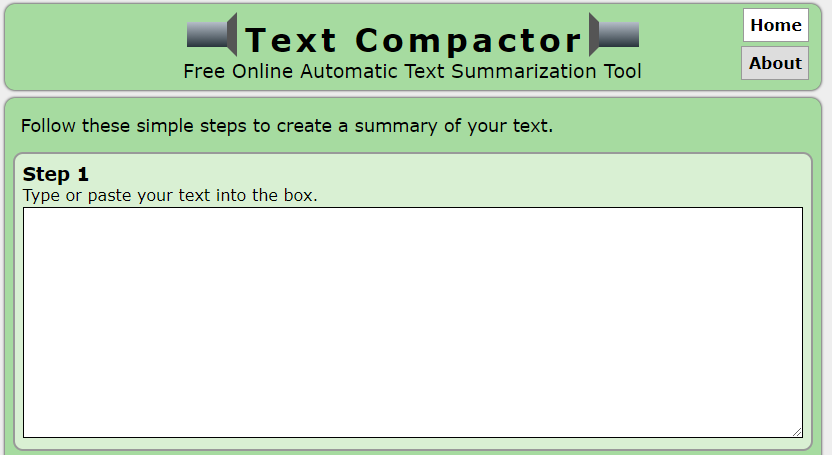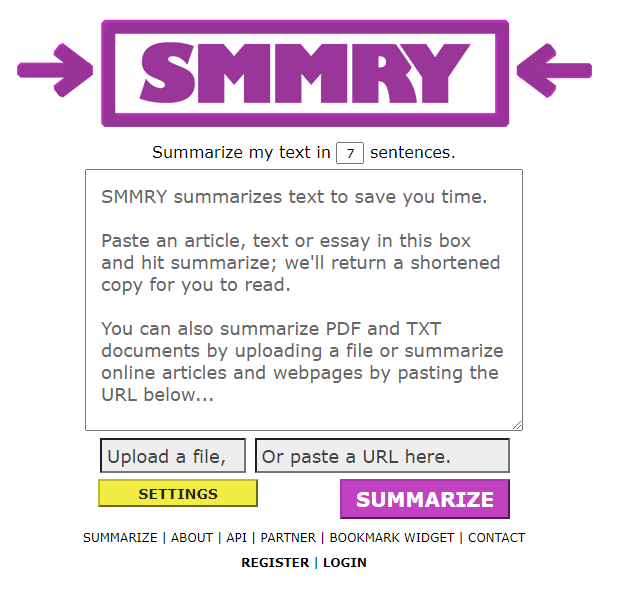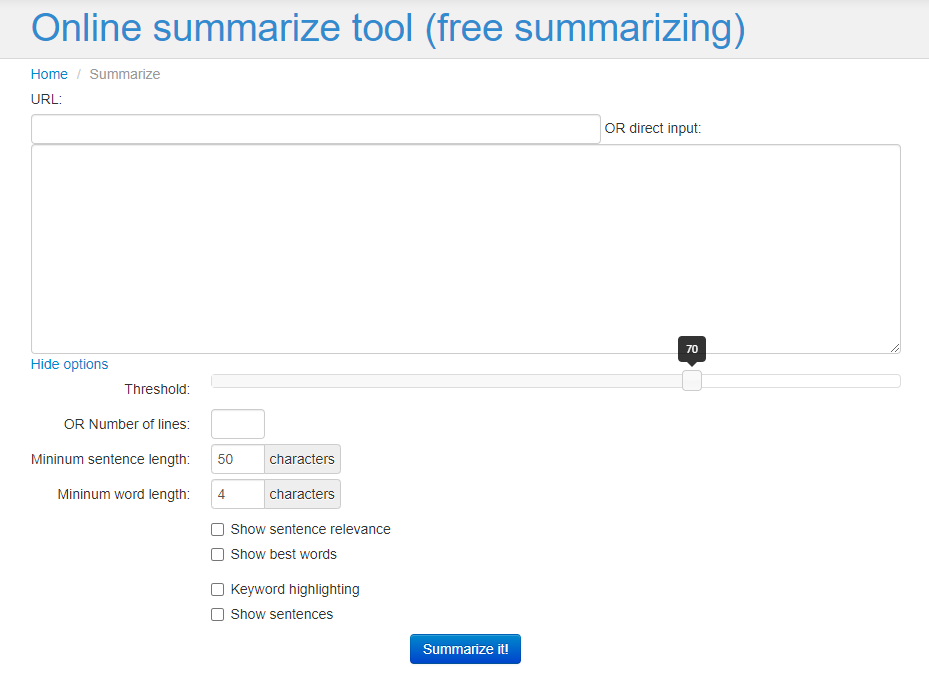Suppose you’ve assigned the task of summarizing an article. In that case, it’s understandable that you’re unsure how to avoid plagiarizing because you’ll need to include quotes and assess all of the concepts presented in the work.
There is, thankfully, a solution! Even if your entire article builds on ideas that are not your own, there are techniques to defeat the originality checker, no matter how impossible it may appear.
We provide our assistance to assist you in writing a summary without plagiarizing despite any hurdles such as a lack of abilities. Moreover, these techniques allow you to do it swiftly or without any rocket science. So, let’s begin!
What Is Plagiarism In An Article?
Plagiarism is a typical and obvious example of sloppy copying of other people’s work. However, it did on purpose. Writers, particularly novices such as new to writing and preparing articles, are prone to committing such errors.
The authors must be conversant with the dos and don’ts of writing to avoid plagiarism while summarizing an article.
How to Summarize Article without Plagiarizing?
Although it is difficult to respond because writers cannot avoid revealing concepts, statements, or phrases while writing and summarizing an article review, however, a few strategies can help you learn how to translate without plagiarizing. We’ll share a few of them with you in this piece!
How to Write a Summary for an Article?
Summarizing is when you give a summary of a text’s essential points in your own words. The original material is always significantly shorter than a summary.
You should not criticize or analyze the source while writing a summary; instead, you should present a clear, impartial, and accurate explanation of the most significant facts and concepts without duplicating any material from the original and without omitting any critical elements.
1. Come Up With an Idea
Choose the concept you want to summarize. It’s critical to zero down on the particular notion you wish to convey and create as a unified statement, whether it’s about specific people, locations, or an event that occurred.
2. Gathered the Information
If you have numerous sources to work with, it’s critical to go over everything and figure out which portions you want to tie your ideas to. It might also be beneficial to highlight (on paper or online) the most significant material.
3. Writing In Own Words
It’s critical to writing in your accent now when you’ve seen the work you’re citing. When a distinctive voice utilizes, it is the easiest method for others to detect plagiarism. Even if the work is scholarly, avoid using a lot of high-level vocabulary if you don’t regularly use them, as this may appear suspicious.
Also, make sure you’re incorporating your ideas while crediting the source you’re using. When you know the best practices, summarizing in your own words is simple. Before you turn in your paper, run it via a recommended tool to check plagiarism for free.
4. Jot Down Quotations
In the first instance, the source you’re using for reference or study ought to be genuine. Try to jot down critical quotes from the source so that you may use them in your piece while referencing the original author. That is how you may avoid being accused of plagiarism because you are not claiming ownership of the work but rather referencing it to describe the situation.
It is not a good idea to cram too many quotations into your research paper, and just a few of them should take from the source. It will look genuine, not as if you wrote them to add to the length of your report.
5. Always Include Citations
Keep track of the materials you’re utilizing while you’re writing. This way, you’ll be able to reference all of them in conclusion correctly. A citation shows that you did not create a piece of text or an idea.
The style guide you’re using will determine how you cite. The APA citation format, for example, is widely used in psychology and education research. Several tools are available to assist you in properly citing a URL or a research paper following the style guide’s rules.
To ensure that all of your materials correctly cite, you must adhere to the journal’s standards for which you are writing. If you’re writing for your blog, you can use a citation in the “reference style,” such as blogger and author use.
6. Paraphrasing
Paraphrasing is a method of writing the same material as in the source text but in your own words. You can’t keep writing the same word, which is, of course, quite prevalent. So, attempt to develop new methods that will completely transform the statement and set it apart from the original.
Make sure you don’t wind up paraphrasing the whole research paper piece. Summarize the essential issues and add some unique arguments. So, anytime you’re having trouble writing a college project in a short amount of time, consider paraphrasing from sample essays or articles.
7. Plagiarizing
It is critical to have a plagiarism checker examine if you have paraphrased information with quotations. It will display the proportion of plagiarism, which should not exceed ten percent.
If you want to protect yourself from plagiarism, submit your paper or article to the institution; otherwise, attempt to comprehend the causes of plagiarism identified by the detector and correct them accordingly.
8. Use of Summarizing tools
This tool examines any piece’s linguistic patterns to get the best outcomes. You’ll be able to catch the idea of any article, essay, research paper, or other work in only a few phrases! You may also use this tool to produce outstanding summaries, thesis statements, and more by summarizing your articles or creative writing assignments.
There is a lot of articles summarizing tools. We will discuss some of them below.
An online summarizer is an absolute winner in terms of utility simply because you can bypass all of the stages necessary to summarize the text or article correctly.
Firstly, let’s see how these tools are helping in creating the summary of an article.
1) It Highlights the Important Information
You don’t even have to seek keywords because an article summarizer can highlight them. The program examines the text and highlights the most crucial information. Therefore, you’ll have an idea of what the content is all about without having to worry about anything.
2) It Delivers Quick Result
How long would it take you to study and absorb a single page? You’ll next devote even more effort to writing your summary. Assume you can read a 500-word article in roughly four minutes. Another 10 to 15 minutes will spend drafting a summary. That’s just if you don’t have to go back and reread anything!
The use of a summary tool is instantaneous. You paste the content, push the button, and your summary appears in a flash.
You’ll obtain all of the same critical information in a fraction of the time without having to read all of the material yourself.
3) Increase Productivity
It is an outcome of the primary benefit. Making a summary with a single click helps you to look through a lot more information. When you’re studying a topic, for example, scouring the web might take hours and hours. You must review each item carefully to see whether it contains any information that you require.
When employing a summary generator, there is no such duty. It will provide you with brief, straightforward, and to-the-point snippets.
4) It helps you learn more effectively.
The ability to create summaries without exerting excessive effort boosts your sense of success. All that remains is for you to review your summaries to connect with the new content and retain the knowledge you’ve gained.
5) It has the potential to become an essential element of your review sessions.
It shouldn’t matter if you’ve already written summaries or are intending to do so. When you need to review content for a test or exam, a text summary tool might still be quite helpful. Attempting to skim through the content will not help you and will be a waste of time.
Having a solid summary allows you to skip this time-consuming and needless phase and get directly to work.
You might try to interpret the summary in your terms to help you remember the material even better.
You will feel more comfortable with the material if you do it this way. This stage also ensures that the summary is free of contextual problems and conveys a coherent message.
How does it work?
To obtain the outcome, all automatic summary tools rely on a specific algorithm. The type of summarization that the tool produces determines how a given algorithm operates.
5 Recommended Summarizing Tools
Following are some summarizing tools that will prove beneficial for you in writing your article summary. Let’s have a look!
1) Prepostseo Summarizing tool
Prepostseo’s Text Summarizer is quite helpful for various purposes, including educational careers and official use. It is because this tool is precise and efficient when creating a summary of an article.
Prepostseo’s Summarizing tool uses complex algorithms that analyze your content and then summarize your typed words. Remember that this tool does not alter the meaning of the text; instead, it comprehends the entire text and determines the optimal overview.

Features
Bullet Points
The tab at the bottom of the tool will help you get the format you want. While you’re summarizing the material, use this button to make your result in bullets. It is most handy after you’ve made a presentation and want to examine it for informational purposes quickly.
Percentage
This overview creator does not automatically summarize the data in discrete lines; instead, you may provide a percentage of the total length of the summarized information.
For example, if you desire 50% of the summary material, you may utilize the function below this tool to specify the desired proportion.
You may easily pick any number between 0 and 100 to receive the material that meets your needs.
Sentence Checker
The best sentence function will show you which sentence gets the most excellent score based on Google algorithms. This function is helpful if you have a large number of corrections to choose from and want to find the best one.
Summarize Ranking Wise
This function assists you in creating a content sequence based on the rating. If a sentence is better optimized, it will receive a higher ranking score. By pressing this button, the arrangement will generate starting with the statement with the highest score in the first place.
2) Text Compactor
Another free summarizing tool is Text Compactor, which allows you to summarize any part of the text by specifying the proportion of text (1-100) you wish to preserve in summary.

You do not need to register to use the ad-free site. However, you won’t be able to input URLs or files and save the results in the most popular file kinds.
However, if your material is more than 500 words, the tool will generate more extended and more sophisticated phrases, so you should save it for shorter articles.
3) SMMRY
SMMRY is a program designed to make it easier to comprehend and summarize articles and content. It is accomplished by condensing the information to only the most significant phrases, rating them using the core algorithm, and restructuring the summary to focus on a single theme.

In addition, the tool eliminates redundant sentences, transition phrases, and instances. Because the tool has many features, an easy-to-use design, and complex options, you get all you need for an excellent summary.
Because the tool has many features, an easy-to-use design, and complex options, you get all you need for an excellent summary. You don’t have to change the content when using URL uploads; type in the URL and wait for the response.
4) Tools4noobs
Tools4noobs is a browser application that connects handy buttons and scripts for you to use or include in your website. Whenever it concerns article abstracts, the free tool is quite user-friendly since it enables you to cut / paste text or enter a URL.

You may choose the type of summary you want and a threshold for trimming the description based on relevant terms from 1-100. You can also utilize the summarizer and attach widgets to your WordPress site for free.
5) Simplifly
This summary tool is available as a Chrome extension with no character limitations, no registration required, and no ads. Simplifly is a tool that allows you to reduce long articles into a digestible summary for any information, including news stories.
However, it is only compatible with Google Chrome and does not allow you to import or export files into standard formats such as PDF.
9 Finally, Check the Summary
Finally, go over the piece again to make sure
- You’ve appropriately reflected the author’s work.
- You haven’t left anything out.
- There are no sentences in the original that are too similar to the phrase.
Suppose you’re summarizing a lot of articles for your work. In that case, it’s a good idea to double-check that your material is entirely original and correctly cited with a plagiarism checker. Just make sure it’s a safe and dependable one.
Useful Tips for Summarizing
Examine the most efficient steps to take at each stage of the paper’s performance.
Initial Stage
• Read the material you’re going to summarize a few times to make sure you comprehend the essential points.
• Reread every sentence of your original content and try to find out the original text’s core point.
• Take notes as you read through your extensive resources.
• Make a list of all the phrases you’ll be using in your paper. Make sure you don’t choose excessively lengthy sentences. The plagiarism checker may detect copied sentences and phrases in hefty sentences.
Middle Stage
To provide the necessary originality, use your wording.
When dealing with sentence paraphrasing, modify the overall structure of the statement. Changing a few words in the selected information isn’t adequate.
When using a direct quote, make sure you structure it appropriately, using quotation marks to avoid plagiarism.
Limit the number of quotations you utilize. Only the most crucial ones should be chosen and used since they will have a considerable impact on your work performance.
Latter Stage
Cite each quote correctly and following the formatting style you’ve assigned.
Provide a comprehensive list of references.
Use an effective online plagiarism checker to ensure that the text is unique.
Conclusion
It is critical to know how to summarize your work, whether you are a student, scholar, educator, worker, or journalist writing on an article, annotated bibliography, or report. However, the dome techniques mentioned above allows you to condense the content’s most important ideas into one or two paragraphs, enabling you to explain them in exact but straightforward terms.
You can gain an overview of the essential points from a short or long-form piece of information using any of these summarizing tools without relying on the author’s language to construct your ideas.
